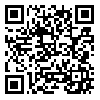BibTeX | RIS | EndNote | Medlars | ProCite | Reference Manager | RefWorks
Send citation to:
URL: http://tumj.tums.ac.ir/article-1-1251-en.html
Background: To determine the incidence and risk factors of acute mountain sickness (A - AMS) in pilgrims. Although it is well known that western trekkers suffer from acute mountain sickness (AMS) in other mountains, not much is documented about the incidence of AMS in the Damavand Mountains, Iranian population that go to high altitude and its related contributing factors.
Materials and Methods: The design was a cross sectional study. During six weeks (in summer 2000) a population of 459 pilgrims was studied. The period of the study was six weeks in summer AMS symptoms, were assessed by an extensively used standard questionnaier (Lake Louise), applied at 2900 m, after than arrive at 4200 m above sea level, and during descent from summit Damavand (at 4200 m) at Damavand in Iran Alborz Mountain.
Results: The overall incidence of A.M.S. was 60.8 percent. Climbers had 13-71 years and 67.8 percent of the study population was men. Men did not differ significantly higher rate of AMS from women. The incidence being increased in those who residence at an altitude below 600 m, climbed fast, amateur climbers, a previous AMS experience or high altitude illness, a history of AMS at ascent to Damavand and ascent time at night (6pm-6am). It was weakly dependent to rate of ascent (from 2800 m up 4200 m less that 4 hours) and sleep in 4200 m. The incidence of AMS was unrelated to sex, age, body mass index (BMI), height, weight, smoking, to the load carried and knapsack and spent more than 15 hours in shelter (at 4200 m). So it was independent of rate of ascent in the higher altitude (from 4200 m to 5671 m), speed of descent and family history of AMS.
Conclusions: Data show a strong relation between experiences mountaineer, history of AMS, ascent time at night and the incidence of acute mountain sickness in 459 climbers studied at high altitudes that didn’t report previously.
| Rights and permissions | |
 |
This work is licensed under a Creative Commons Attribution-NonCommercial 4.0 International License. |





